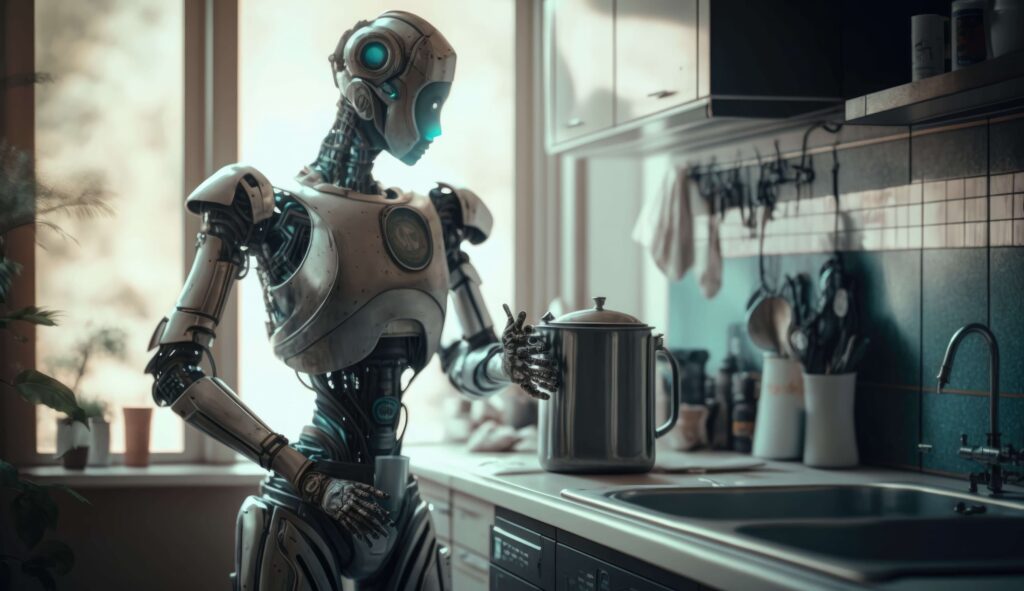
AI-powered humanoid robots that can do house chores for us may soon become a reality. And while we’re waiting for that tech, we can mess around with cheaper AI robots that can do several tasks. But how much does an AI robot cost?
An AI robot can cost from around $200 to over $500,000, depending on its capabilities and scale. Smaller AI-powered robots like Vector 2.0 cost less than $1,000, whereas AI robots with advanced capabilities and level of interaction, like Ameca, can cost over $100,000.
Let’s go over some of the most popular AI robots that you can buy today to see how much they cost and what they’re capable of. I’ll also provide an overview of some of the more advanced AI robots that will come to market soon.
How Much Do Home AI Robots Cost?
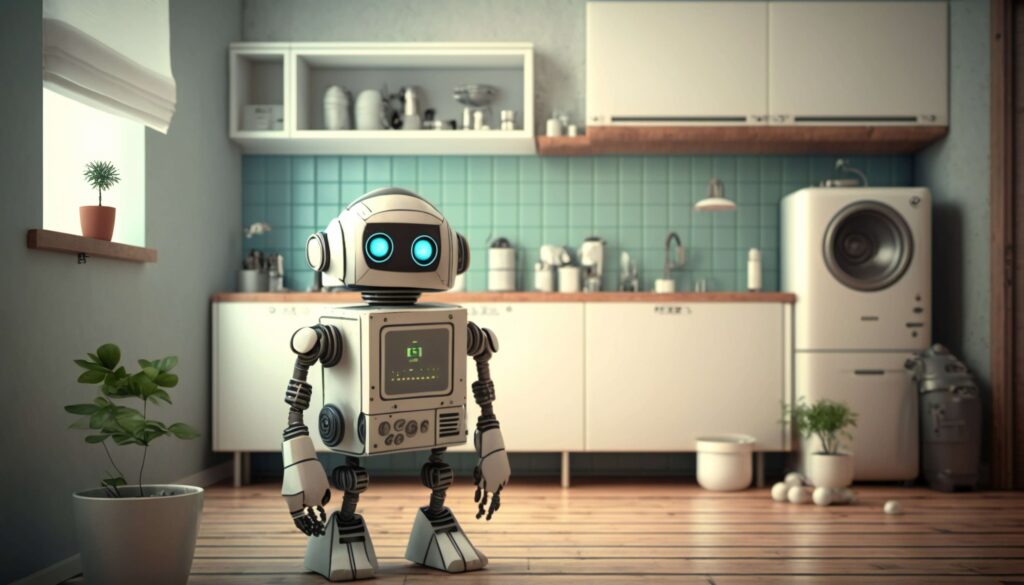
If you want to buy an AI robot for your house today, there are quite a few options to choose from. There’s something for everyone, from robot dogs that act like real pooches to Wall-E-inspired Amazon Alexa assistants.
Smaller home AI-powered robots start at $200 and can cost around $3000 for more advanced models like the Sony Aibo. The cost largely depends on how advanced the AI and the hardware are. Better AI robots have more and better cameras, touch sensors, moving parts, computational power, and more.
What Can They Do?
To better understand why the cost varies so much, let’s go over some of these AI robots to see what they can do.
Vector 2.0
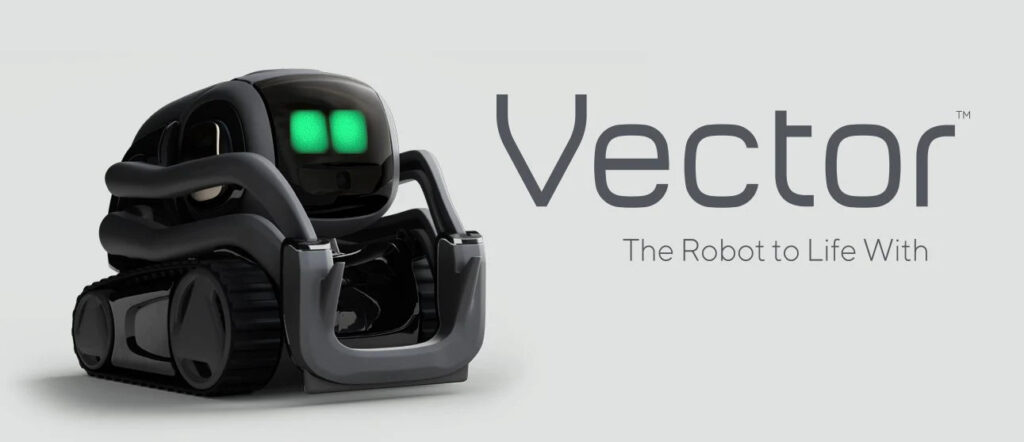
My favorite AI-powered robot has to be the new AI-powered Vector 2.0. The first Vector was launched in 2018 by Anki (now a subsidiary of Digital Dream Labs).
Vector 2.0 expanded its capabilities by improving the camera and battery life. It cost $399.99 at launch.
Although you can’t have a proper conversation with Vector like you can with ChatGPT, you can ask it some basic questions. And its Amazon Alexa integration allows it to do a whole lot more.
Vector treads the line between a toy and a tool.
Here’s a complete overview of some things Vector 2.0 can do:
- Recognize and remember faces.
- Navigate around the desk without bumping or running off of it.
- Set a timer.
- Tell you the weather and news.
- Goes to his charger on his own.
- Reacts to his surroundings.
Another cool thing about Vector is that he sometimes does things independently and even ignores you like a real pet. Check out this video below to learn more about his AI capabilities:
Amazon Astro
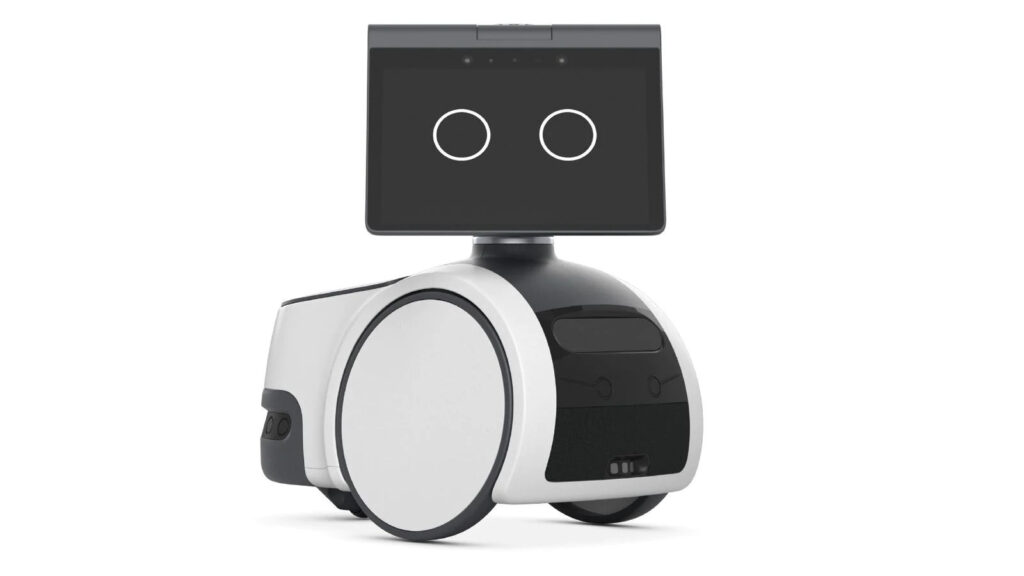
Amazon Astro (Amazon.com) is currently only available by invitation, costing under $2,000. You can think of it as an Amazon Alexa on wheels — it’s a smart robot that can follow you around, but it isn’t fully powered by AI yet.
However, I think it’s worth mentioning. Leaked documents about an AI called Burnham tell us what Astro will be able to do.
When this update rolls out (pun intended), Astro will be able to use LLM (large language models) to understand the context and what you’d like it to do.
According to the leaked documents, Astro would be able to do smaller chores, such as:
- Notify you that a window is open, or a stovetop was left on.
- Find lost items like car keys.
- Watch your kids when you’re not home.
- Sweep broken glass.
The implications of contextual understanding at such an affordable price are paramount. The dream of not having to scoop a litter box is finally becoming a reality.
Jokes aside, Astro could help with emergency services and call 911 when humans aren’t around.
The only downside is that we don’t know when Burnham will be released.
But if you can get your hands on Astro, it might be worth investing early, as the robot can already answer questions, play music, and stream TV shows.
Sony Aibo
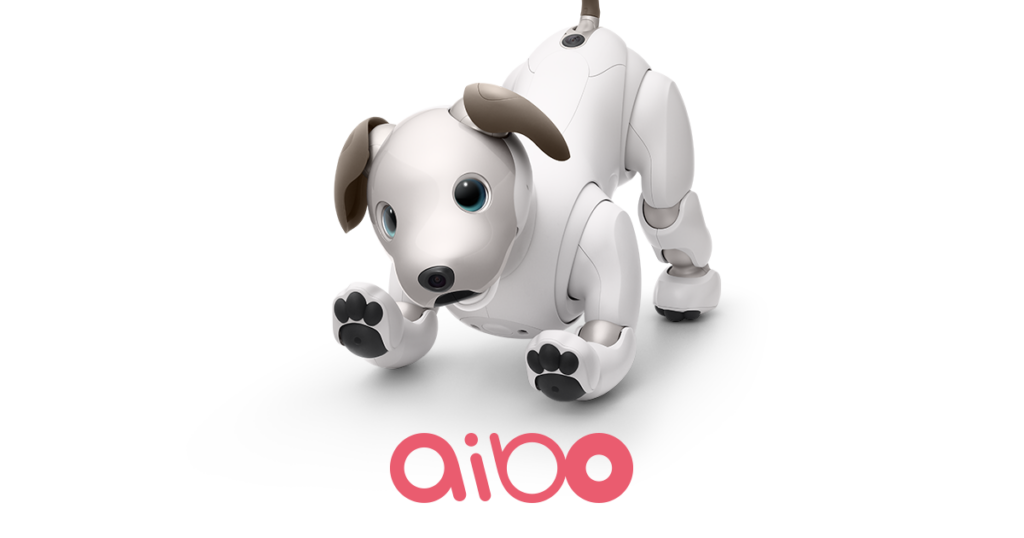
Sony’s Aibo puppies are one of the oldest and most recognizable robots on the market.
The newest model is powered by AI and is one of the most expensive AI robots you can buy today. It costs close to $3,000. Plus, you can buy accessories and an annual AI cloud plan that costs $300.
And you almost have to buy the cloud plan if you want to unlock Aibo’s full potential.
But what can this expensive pooch do?
Well, it’s a lot like a real dog. Its main trick is that it has an evolving personality with the help of AI and machine learning. It uses an array of cameras and sensors to understand its environment, recognize its owners, and perform tricks.
This charming puppy is a source of pure joy and entertainment, and it can even interact with other Aibos. For instance, it might perform a new trick in front of guests to impress both you and them.
Check out the video below to learn more about how AI helps Aibo grow and learn:
Miko
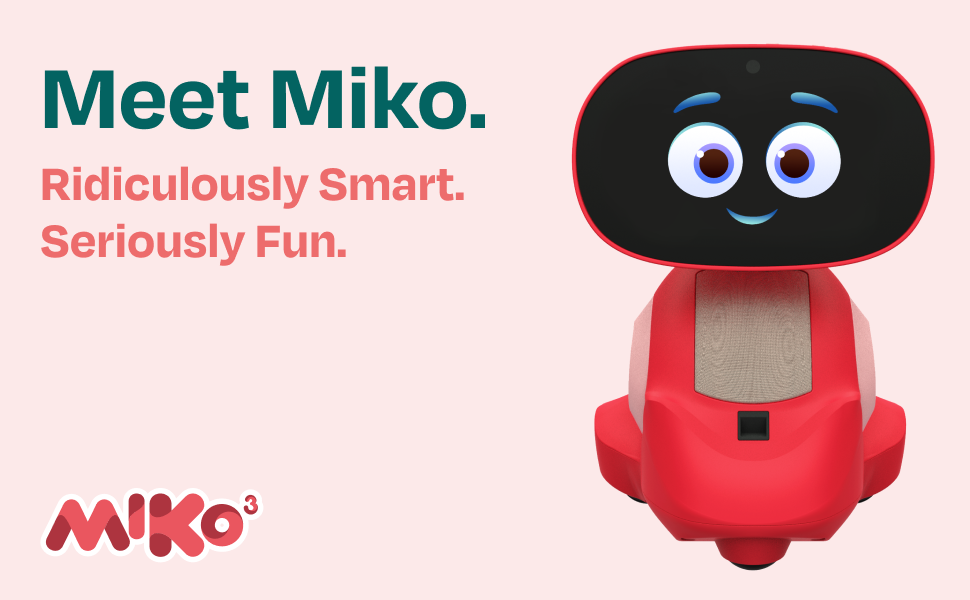
If you’re looking for a relatively affordable AI-powered robot for your kid, this is the one to get, period. Miko 3 (Amazon.com) utilizes AI to interact with children effectively and might even help them develop social skills. As a bonus, it’s affordable (check the Amazon link for current pricing).
Miko 3 is equipped with a touchscreen, camera, and sensors to help it see the world around it.
The AI in Miko 3 allows it to better understand the needs and personality traits of each individual. It can teach children STEAM topics through interactive games and quizzes. The data is encrypted, and Miko 3 has profanity filters, so it’s pretty safe.
Miko 3 can also:
- Play music
- Answer questions
- Dance
- Express emotions and empathy
- Give culturally-neutral suggestions
How Much Do Advanced Humanoid AI Robots Cost?
Advanced AI robots start at around $100,000, but the price could be lower if Tesla’s Optimus robot reaches the intended $20,000 goal. Ultimately, it remains to be seen how much more powerful AI robots will cost as they get developed.
What Will They Be Able To Do?
Ideally, an AI robot that’s sturdy, flexible, and smart enough would be able to do everything around the house. It could even be an intelligent companion, sort of like how ChatGPT has already crept into our routines.
A theoretical AI humanoid robot would be able to do any and all house chores with minimal input, learn the ins and outs of your house, and let you know when somebody is at the door.
Let’s look at some up-and-coming robots and what they’ll be capable of.
Ameca
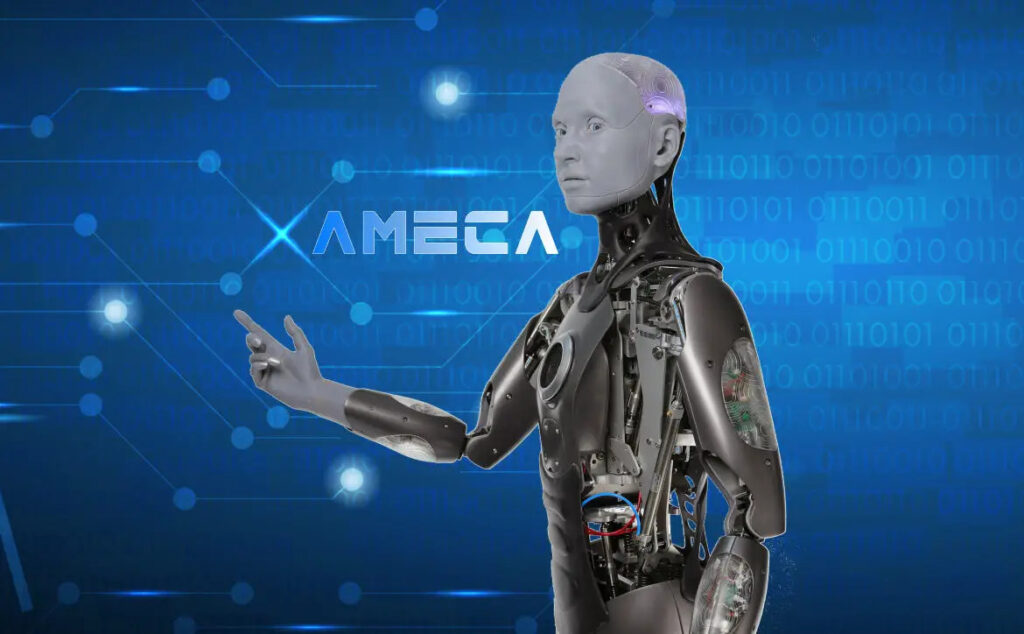
Ameca is one of the most rescind and most ambitious AI robots on the market. It can answer questions and do things similarly to a human. You can think of it as ChatGPT in robotic flesh. It costs around $100,000 for the head and torso or about $400,000 for the full robotic body.
The reason why the body is so expensive is that it’s quite similar to a human body. The Mesmer technology is built based on scans of real people to allow engineers to create a convincing human-like body.
As for the generative AI capabilities, Engineered Arts has essentially adapted a version of GPT-3 to better suit their needs. It can resolve conflicts quickly and only takes a few seconds to “think” and respond.
Check out the video below to see what a genuine conversation with Ameca looks like:
Optimus (Tesla Bot)
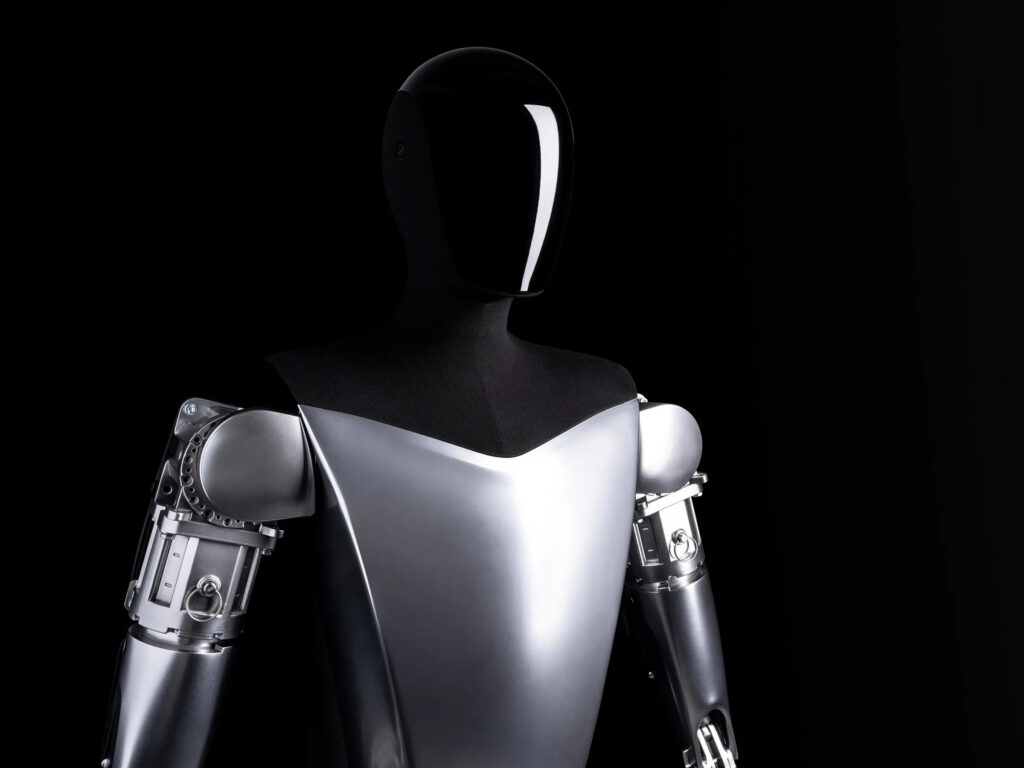
As I mentioned above, Elon Musk wants Optimus to cost $20,000 or less. And that’s for the whole body. The price will likely change as the robot gets developed and rolled out.
Considering Ameca and its body costs $400,000, it’s unlikely that Optimus will manage to reach that price point, at least at launch.
Tesla has showcased their Tesla Bot and its accomplishments in a recent video:
Tesla’s goal is similar to that of other AI robotics companies — a robot capable of doing mundane tasks around the house and answering questions accurately.
As you can see from the video, Tesla’s bot can now recognize and pick up objects to sort them and walk rather clumsily.
Phoenix (Sanctuary AI)
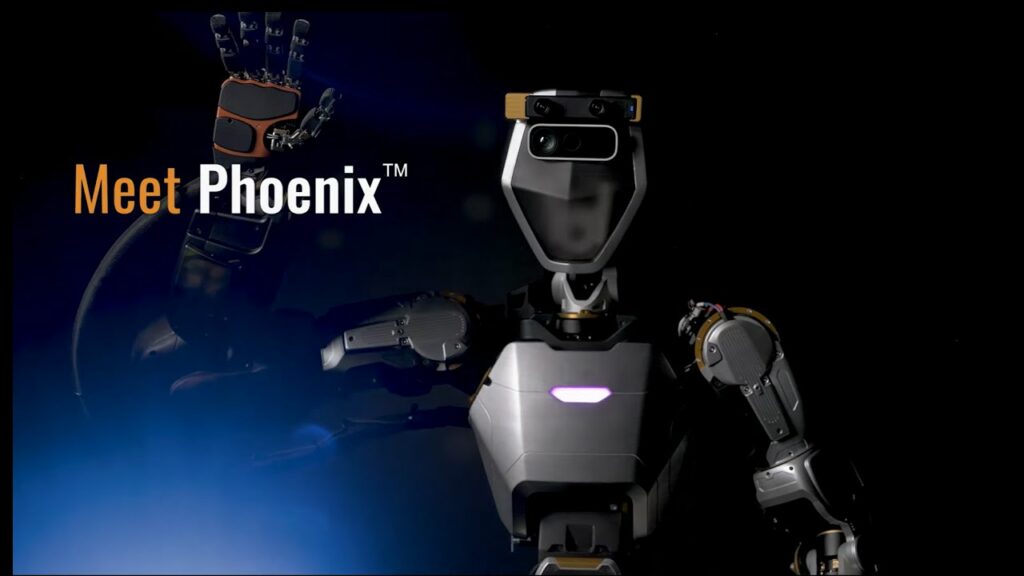
Lastly, I’m going to briefly go over Phoenix, which is Sanctuary AI’s humanoid robot. It uses Carbon, which is Sanctuary AI’s proprietary general-purpose AI. The price hasn’t been announced yet.
The goal with Phoenix is to create an AI-powered robot that’s good at almost everything. It’s already quite nimble and dexterous, and its Carbon AI technology allows it to understand human language within the real world.
It learns how to interact with the world around it with the help of deep learning and reinforcement learning.
If Sanctuary AI succeeds at its mission, Phoenix will join the ranks of the most capable AI robots.
Final Thoughts
AI robots of today and tomorrow have some impressive technology inside of them. From AI-powered toys and dogs to actual humanoid robots, there’s a lot to be excited about.
And while human-like robots that can use AI to do whatever you tell them are still a few years away, you can get a robot dog today.
Sources
- ABC7: What’s new in robots?
- Forbes: The Future Is Here: Amazon Is Now Selling Astro, An AI Driven Household Robot
- PCMag: Amazon Astro Review
- Wikipedia: Sophia (robot)
- Builtin: 27 AI Robotics Companies Driving Innovation
- Geekflare: 13 Personal Robots You Can Buy In 2023
- The Verge: Amazon’s working on a secret new home robot that could be more like Rosie
- Asia News Network: Japanese companies develop sophisticated robots built for companionship
- TechRadar: Sony’s Aibo robot dog is significantly more expensive than a real pooch
- Wikipedia: Anki (company)
- Superparent: Miko 3 Is An Educational Robot That Can Talk to Kids
- Engineered Arts: Ameca
- Sanctuary AI: Sanctuary AI Unveils Phoenix
Recent Posts
Enhancing E-commerce With Personalized Product Recommendation
Introduction to AI-Driven Personalized Product Recommendations In today's competitive e-commerce landscape, businesses are constantly looking for ways to enhance customer experiences and drive...
In this blog post, I delve into how AI is used in customer analytics and user behavior analysis, uncovering the potential of customer segmentation, personalization, product recommendations, and...
